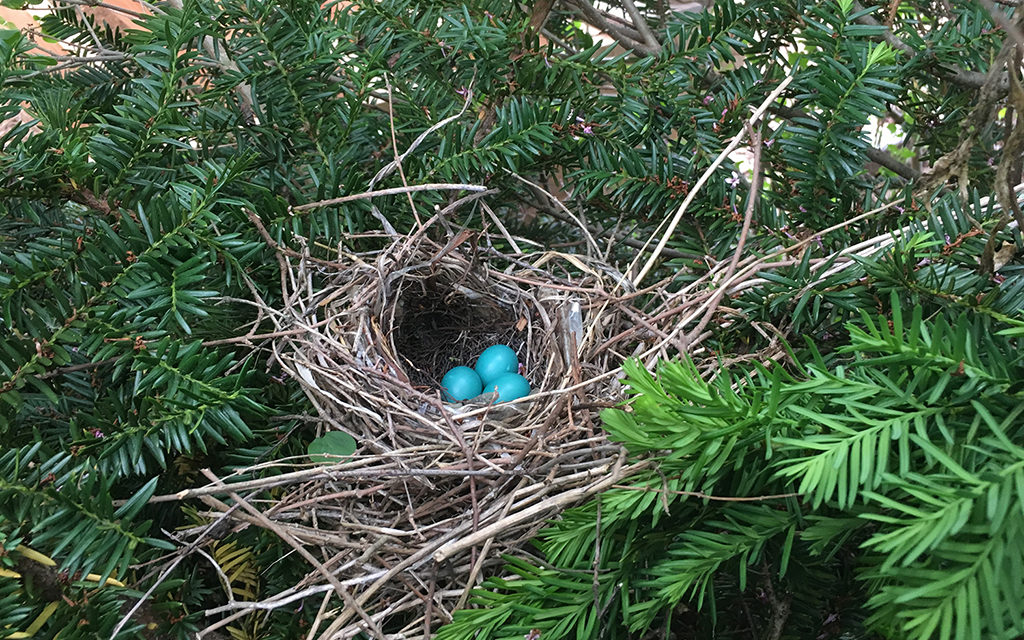by Melinda Myers
Temperature extremes, drought and storms take a toll on our landscapes. Sometimes a bit of pruning, proper care and patience is all that is needed to help plants recover. Other times, plants need replacing. It is always sad to lose a favorite plant. The memories, time and money invested are lost, but it presents an opportunity to grow something new.
Consider creating a bird-friendly landscape when selecting replacements for failing and dead plants. Working with nature is a great way to support birds without the use of feeders.
Look for seed, berry and nectar producing plants that attract songbirds. You will enjoy the color and motion these birds add to your landscape. Plus, 96% of terrestrial North American birds feed upon insects, helping you manage garden pests.
Plant bird-friendly flowers, shrubs, and trees in clusters whenever possible. This creates an impressive display in the landscape and allows birds to gather food more efficiently and waste less energy traveling between plants.
Select a variety of plants to ensure both seasonal and year-round birds have plenty of food. Include a mixture of plants that provide seeds, berries, or nectar from spring through fall. These plants are nature’s birdfeeders, eliminating the need to clean and fill traditional feeders.
Include native trees, shrubs, and flowers whenever they are suited to the growing conditions in your yard. Native plants, birds and insects have co-evolved over time, making them a great source of food and shelter for native birds. Audubon’s Native Plant Database provides lists of plants suited to your location.
Consider plants with year-round appeal. Evergreens provide screening and a backdrop for other plants and shelter for the birds. Junipers come in a variety of sizes and shapes and tolerate hot dry conditions once established. Choose hemlocks for those shadier locations. They require moist well-drained soil and shelter from winter wind and sun.
Deciduous trees and shrubs – those that lose their leaves in winter – can provide multiple seasons of beauty with flowers, fruit, fall color and interesting bark. Many of these also provide shelter and food for songbirds. Serviceberries have multiple seasons of beauty and produce edible fruit you and the birds will enjoy in June. Dogwoods, including red twig and pagoda, have flowers for pollinators and late summer fruit for the songbirds. Winterberry is an excellent source of winter food. You will need at least one male for every one to five female plants for pollination and fruit to form. Grow these in full sun to light shade and moist acidic soil.
Reduce the risk of injury and the inconvenience of accidentally knocking out power, cable or other utilities while making bird-friendly additions to the landscape. Contact Diggers Hotline at least three business days before you get started planting. Just call 811 or file a request online at https://call811.com/811-In-Your-State. They will contact all the appropriate companies who will mark the location of their underground utilities in the designated work area. August 11 has been declared 811 Day to remind everyone to call 811 prior to any digging project.
Your efforts now to welcome birds into your landscape are sure to provide much beauty and enjoyment for years to come.
Melinda Myers has written more than 20 gardening books, including the recently released Midwest Gardener’s Handbook, 2nd Edition and Small Space Gardening. She hosts The Great Courses “How to Grow Anything” DVD instant video series and the nationally syndicated Melinda’s Garden Moment TV & radio program. Myers is a columnist and contributing editor for Birds & Blooms magazine and her website is www.MelindaMyers.com.





